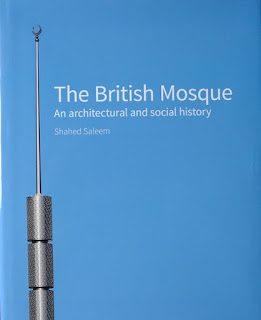The mosque in the spotlight
For the next week or so, English Buildings becomes a book blog, and I'll post a handful of recent books that have caught my eye. First, an important addition to the architectural library from Historic England.
Shahed Saleem, The British Mosque: An Architectural and Social History
Published by Historic England
This book is a major contribution to architectural history and to wider cultural understanding. It is the first full-length study of mosque architecture in Britain, and starts with the very beginnings: the first mosques in Britain, such as the outstanding Shah Jahan Mosque in Woking (1889), designed by William Isaac Chambers and complete with onion domes and ogee arches: an early example of a style that would become associated with Islam in England. However, as the book shows, mosques can be much plainer buildings, often adaptations of existing houses or chapels. As the book makes clear at the outset, the main basic architectural requirements for a mosque are few: a prayer hall in which worshippers can stand facing the Ka’ba in Mecca; a place for ritual ablutions.
The story of the adapted structures is told alongside the many purpose-built mosques that were put up in the wake of increased migration to this country after World War II. By the 1970s and 1980s a repertoire of architectural symbols – domes, minarets, certain types of arches, decoration using geometrical abstract patterns, and so on – had become established as a way of expressing Muslim identities through building. This identity was expressed in major buildings such as the London Central Mosque (Regent’s Park Mosque) and the East London Mosque, both landmarks in the capital. A revelation, though, is the architectural quality of a range of major mosques, from Gloucester to Bradford. This is already a rich artistic tradition.
The book’s many case studies discuss and illustrate these major structures in some depth. They do so against a background of the social history of Islam in Britain, and with a clear eye on the various ways in which these buildings are used. The British Mosque is a fascinating book, and fills a major gap in the architectural history of these islands.




Comments
Post a Comment